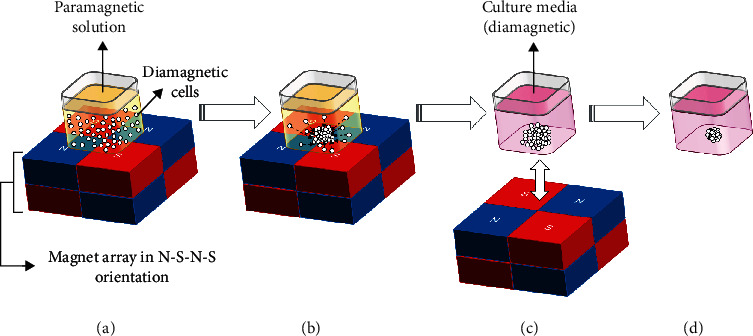Figure 1.

Schematic illustration of the magnetically assisted printing of 3D cellular structures. (a) Printing 3D cellular structures with magnetic assistance requires (1) a homogeneous suspension of cells in a liquid medium, (2) a magnetic susceptibility difference between the cells (diamagnetic) and the medium (paramagnetic), and (3) an applied inhomogeneous magnetic field. This is produced by a quartet of magnets in North-South-North-South (N-S-N-S) orientation. At the intersection of this quartet, there is a region of low magnetic field gradient. A physical well that is part of a standard 384- or 96-well plate is placed directly above this region. (b) The diamagnetic cells are displaced towards the center of the well. (c) After all cells have assembled in the center of the well and have had sufficient intercellular interactions to stabilize the cell agglomerate, the paramagnetic solution is replaced with regular culture media, and the magnetic field is removed. (d) The 3D cellular structure contracts as a result of continued intercellular interactions.
